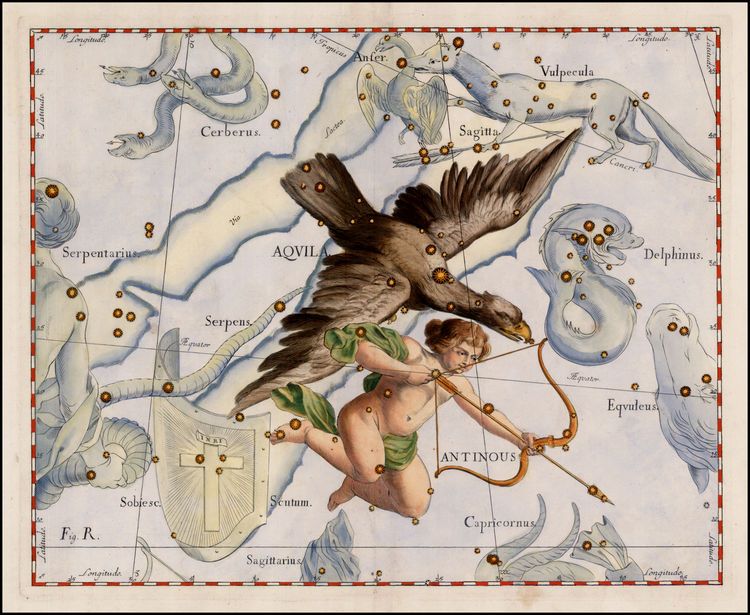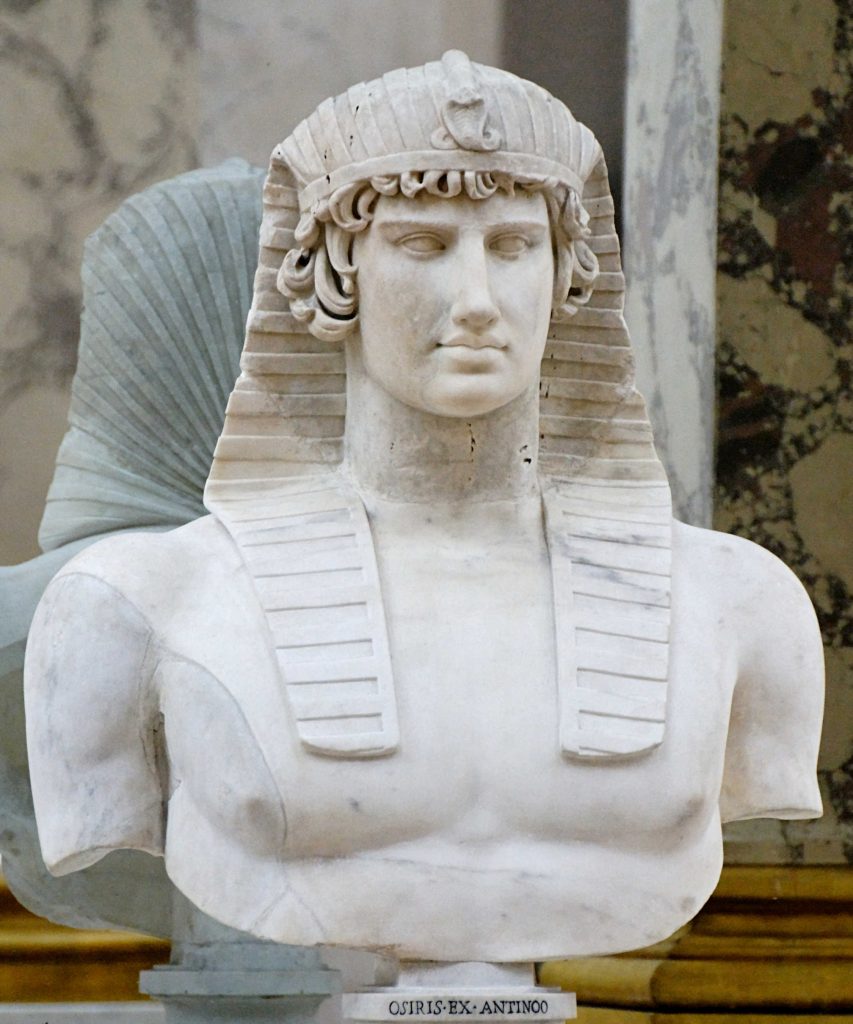
Little is known of Antinoös’s life, although it is known that he was born in Claudiopolis (present day Bolu, Turkey), in the Roman province of Bithynia et Pontus. He was probably introduced to Hadrian in 123, before being taken to Italy for a higher education. He had become the favourite of Hadrian by 128, when he was taken on a tour of the Roman Empire as part of Hadrian’s personal retinue. Antinoös accompanied Hadrian during his attendance of the annual Eleusinian Mysteries in Athens, and was with him when he killed the Marousian lion in Libya. In October 130, as they were part of a flotilla going along the Nile, Antinoös died amid mysterious circumstances. Various suggestions have been put forward for how he died, ranging from an accidental drowning to suicide.

Hadrian was devastated by the death of Antinoös, and possibly also experiencing remorse. In Egypt, the local priesthood immediately deified Antinoös by identifying him with Osiris due to the manner of his death. In keeping with Egyptian custom, Antinoös’s body was probably embalmed and mummified by priests, a lengthy process which might explain why Hadrian remained in Egypt until spring 131. While there, in October 130 Hadrian proclaimed Antinoös to be a deity and announced that a city should be built on the site of his death in commemoration of him, to be called Antinoöpolis. Hadrian’s decision to declare Antinoös a god and create a formal cult devoted to him was highly unusual, and he did so without the permission of the Senate. Hadrian also identified a star in the sky between the Eagle and the Zodiac to be Antinoös, and came to associate the rosy lotus that grew on the banks of the Nile as being the flower of Antinoös.

Following his death, Hadrian deified Antinoös and founded an organised cult devoted to his worship that spread throughout the Empire. Hadrian founded the city of Antinoöpolis close to Antinoös’s place of death, which became a cultic centre for the worship of Osiris-Antinoös. Hadrian also founded games in commemoration of Antinoös to take place in both Antinoöpolis and Athens, with Antinoös becoming a symbol of Hadrian’s dreams of pan-Hellenism. The worship of Antinoös proved to be one of the most enduring and popular of cults of deified humans in the Roman empire, and events continued to be founded in his honor long after Hadrian’s death.

During the Roman Empire, the city of Antinoöpolis was erected in AD 130 by the emperor Hadrian on the site of Hir-we as the cult centre of the deified Antinoüs. All previous buildings, including a necropolis, were razed and replaced, with the exception of the Temple of Ramses II.
Hadrian also had political motives for the creation of Antinoöpolis, which was to be the first Hellenic city in the Middle Nile region, thus serving as a bastion of Greek culture within the Egyptian area. To encourage Egyptians to integrate with this imported Greek culture, he permitted Greeks and Egyptians in the city to marry and allowed the main deity of Hir-we, Bes, to continue to be worshipped in Antinoöpolis alongside the new primary deity, Osiris-Antinoüs.